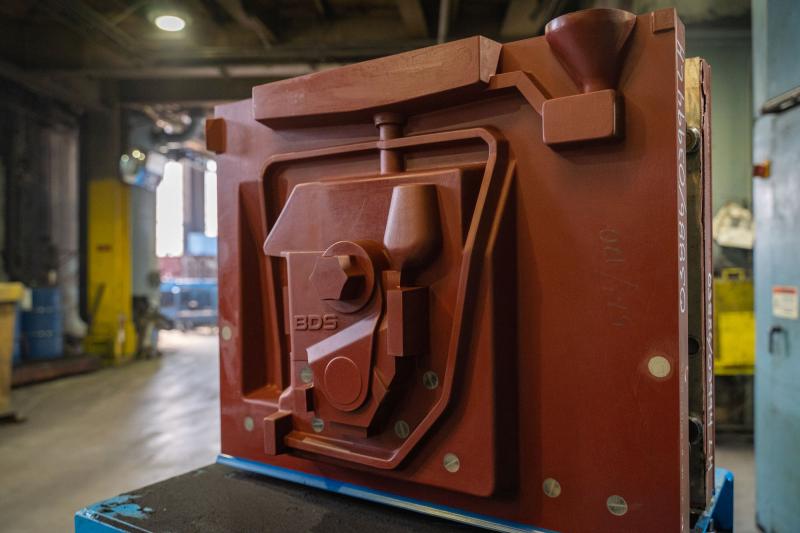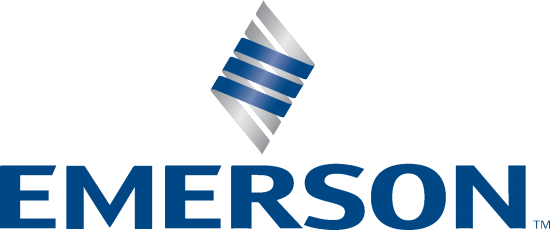Every good ductile iron casting is the result of a good pattern. Foundry pattern making is the process of designing and creating a mold pattern, casting pattern, or sand casting pattern if sand is the material the mold is to be made from. It is the first step in the ductile iron casting process. The pattern is used to create the mold cavity into which molten material will be poured to solidify and form the desired casting.
The mold pattern is often described as a replica of the part to be cast in the mold. That, however, is not entirely true. The pattern may have to be designed with modifications that take into account many other factors than simply matching the dimensions of the part we are hoping to make.
Other things foundry patternmakers and engineers keep in mind when designing a mold pattern include:
- Pattern material
- Mold material
- Casting material
- Part complexity
- Pattern expendability
- Pattern style
Keep reading as we take a close look at pattern making, pattern molding, and the role of the mold pattern in casting ductile iron parts.
Things We Consider when Creating a Mold Pattern
A pattern that is efficiently and accurately produced goes a long way in reducing production turnaround times, Factors impacting the creation of the pattern can be grouped into two broad categories: material and design.
Pattern materials
A variety of materials can be used to make the pattern when casting molds. Casting temperature, pattern reusability, and the material's resistance to distortion, warping, humidity, etc. will affect the final choice of pattern material.
Some common pattern materials are:
- Wood
- Metal
- Ceramic
- Resin
- Wax
- Rubber
- Plastics
- Plaster of Paris
- Fiberglass
The materials most commonly used for sand casting patterns are wood and metal.
Pattern design considerations
Patterns are larger than the final product and may look somewhat distorted, too. Reasons for this are the various design considerations that affect whether the pattern creates a mold that will, in turn, create a product of acceptable ASTM A536 standard.
Allowances
From facilitating easy removal of the pattern from the mold to calculating how different metals shrink as they cool, several allowances must be incorporated into the design of a mold pattern. Let's take a look at four of them.
Draft
All the other considerations we'll look at would likely be for naught if the draft isn't factored in! Draft refers to designing the pattern with tapered sides to reduce damage to the mold as it is unmolded from the pattern.
Contraction allowance
The contracting, or shrinking, of the casting metal, as it cools is compensated for by the contraction allowance. Different metals contract by different degrees as they go from molten to solid so the contraction allowance in the pattern will depend on the casting metal.
Distortion allowance
Distortions may naturally take place in the mold as it cools. Experience and scientific know-how help patternmakers and design engineers to anticipate this in the mold and casting material and make allowances for it in the pattern design.
Machining or finishing allowance
Machining is usually necessary to remove excess material from the casting to get it to the required dimensions. The pattern makes allowances for this. Urick Foundry also utilizes near-net shape fabrication for all its ductile iron castings. This greatly reduces the amount of machining components needed after production. This, in turn, improves turnaround time, too.
Gating systems
Regardless of all of the possible variations in pattern design, they all have one thing in common - a gating system. This is a set of structures that the molten material flows through as it makes its way into the mold.
A gating system has several parts:
Pouring cup - A cone-shaped vessel that first receives the molten metal. It helps to control the rate of flow of the metal into the mold.
Sprue - A tapered vertical section that metal from the pouring cup flows into.
Runner - A horizontal channel leading from the sprue that delivers metal to the gates.
Gates - Entryways into the mold cavity. The size of a gate is directly related to the rate at which the casting metal cools.
Mold patterns may also show where risers and chills are located in the mold.
- A riser is a reservoir of molten casting material. Risers help to control the direction of cooling and the shrinkage of the metal as it cools. They also prevent the formation of holes in the casting.
- A chill is a metal plate that acts as a heat sink, allowing a particular part of the casting to cool rapidly. Like risers, chills play a role in the direction of cooling of the metal. They also help to refine its grain structure as it cools.
The number, size, and location of the different components of the gating system are decided on by the patternmaker or the foundry engineer.
Part complexity
Shape, gating system, and the presence of cores are the major considerations here.
- Some castings have a more complex external and internal shape than others.
- The gating system may have multiple risers or chills to serve different sections of the object. Its gates may have different sizes, too.
- Some castings need one or multiple cores. These are typically made of sand, clay, or coal. They are used to create internal spaces, such as holes, passages, and cavities within the casting.
Types of mold patterns
Mold patterns, including sand casting patterns, come in a variety of styles for making simple or complex, solid or hollow objects. Different pattern styles may also be better suited to casting small or large items, a few or a great many items, and symmetrical or asymmetrical castings.
Two often-used types of mold patterns are the gated pattern and the match plate pattern.
Gated patterns
A gated pattern can be thought of as a "pattern of patterns" with an interconnected gating system. It allows for the casting of multiple items at the same time and may be designed with a main runner and branches leading to the gates of the individual items.
The gated pattern is common in casting. It is ideal for mass-producing small castings in a cost-effective way.
Match plate patterns
The match plate pattern is also a popular sand casting pattern. It is essentially a split pattern with its top and bottom (also called the cope and drag) mounted on opposite sides of a metallic plate (the match plate).
Wide use of the match plate pattern can be attributed to its ease of use and very high output. The higher cost of producing match plate patterns is usually offset by the large production volumes they allow for.
Other pattern types
Some other pattern styles are less frequently used but each does have a place in the casting industry. Here's a quick rundown of what these might be.
- Solid piece or single piece pattern - This is the simplest and cheapest type of mold pattern. It is suitable when components have flat sides or for low production quantities.
- Multi-piece pattern - Each piece represents a part of the final casting. This is a useful method for casting molds for complicated objects.
- Cope and drag pattern - This is similar to a match plate pattern but has the cope and drag (top and bottom) mounted separately.
- Follow board pattern - As an extension of the cope and drag pattern, it is used when there are irregular parting lines between the cope and drag.
- Skeleton pattern - This is most often used for making a small number of large, hollow castings. It is made up of a wooden frame and strips.
- Sweep pattern - A sweep pattern in casting is a rotating template used to create a symmetrical mold in sand. This method is often preferable for creating sand-casting patterns for large castings.
- Shell pattern - This is often used for thin-walled, hollow castings. The outer surface creates the mold pattern and the inner surface serves as a pattern for the core.
Pattern molding
Sand casting is both cost-effective and efficient, making it the most popular method for casting metal parts, as in ductile iron casting. Once the initial step of designing and creating the pattern is complete, the next step is to create the sand mold.
First, the sand is mixed with a suitable bonding substance. The exact composition of the mixture will affect its moldability, plasticity, and strength. The grain of the sand affects the quality of the finish on the cast item.
At Urick, we use the finest grain foundry sand collected from the banks of Lake Michigan. It guarantees an exceptional finish on each ductile iron casting we produce. We also use a specially formulated bonding agent that includes bentonite clay, sea-coal, and some other super-secret stuff!
The sand and bonding agent mixture are moistened. The mold cavity and its gating system are then created by compacting the mixture around the pattern. If we need to use a core in sand casting a mold to create an internal space in the casting, it is placed after the pattern is removed.
A flask (a system of frames and mold boxes) may be used to hold the sand but in some cases no flask is used - our Mark Sullivan explains how this is done when we're casting handles for the iconic Ridgid wrench at our foundry.
Molten metal can now be poured into the mold to solidify and become the casting. The cores are broken up or pushed out. The sprues and risers are cut from the casting. Any final heat treatments, such as austempering for improved mechanical properties, are carried out.
So, now you must be wondering what happens to a mold pattern once the mold has been created. Right?
Lifetime patterns from Urick
As a century-old foundry, Urick brings plenty of experience to the foundry pattern-making process. We know every successful pattern requires sound engineering and technological knowledge, as well as refined artisan skills.
These inputs make reusable patterns a valuable asset. It's why we offer our clients lifetime patterns at Urick. The patterns we create for you are yours. We simply store them for you after mold-making is complete. It's all a part of Casting 101 at Urick!
If, for whatever reason, you need to restart or scale production, you know you can do it without the costs associated with having a new pattern made. Plus, by reusing the original pattern, you can rest assured the new production batches will consistently match the previous ones.
Contact Urick today. Our foundry pattern-making team of experts is ready to get started on your project.



